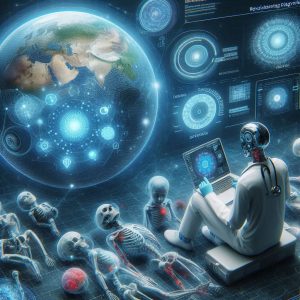Revolutionizing Diagnosis The Role of AI in Early Disease Detection
Artificial Intelligence (AI) is transforming many facets of our lives, and healthcare is no exception. One of the most promising areas of this transformation is early disease detection. By leveraging advanced algorithms and vast datasets, AI can identify diseases at their earliest stages, often before symptoms appear, enabling timely intervention and improved patient outcomes.
Success Stories and Exemplary Cases
Numerous companies have emerged as trailblazers in AI-driven diagnostics, rewriting the norms of medical practice and inspiring a new generation of innovators. From tech giants like IBM Watson Health, Google Health, and Microsoft’s InnerEye to specialized startups like Tempus, Babylon Health, and PathAI, these success stories underscore the transformative power of AI in healthcare.
AI Technologies and Their Impact
AI technologies, such as machine learning, natural language processing, and computer vision, play a critical role in early disease detection:
- Machine Learning: Algorithms analyze patient data to predict disease risk and progression.
- Natural Language Processing: Processes unstructured data like medical records and research papers to extract relevant information.
- Computer Vision: Analyzes medical images to identify anomalies and diagnose conditions.
Case Studies
Google Health: Utilizing AI to detect diabetic retinopathy through retinal scans, achieving a level of accuracy comparable to that of human specialists.
IBM Watson Health: Leveraging natural language processing to help oncologists identify the most effective cancer treatments based on patient records and recent research.
Tempus: Using machine learning to personalize cancer treatment by analyzing clinical and molecular data to find the best therapy options for patients.
Advantages of AI in Early Detection
The integration of AI into healthcare brings several advantages:
| Advantage | Description |
|---|---|
| Early Intervention | Detects diseases at initial stages, enabling timely treatment and better outcomes. |
| Personalized Medicine | Tailors treatments based on individual patient data, improving efficacy and reducing side effects. |
| Reduced Costs | Decreases healthcare costs by preventing disease progression and avoiding unnecessary treatments. |
| Improved Accuracy | Provides high accuracy in diagnostics by analyzing large datasets and identifying patterns beyond human capability. |
Challenges and Considerations
Despite the significant advantages, the integration of AI in early disease detection faces several challenges:
- Data Privacy: Ensuring patient data is securely handled and compliant with regulations.
- Bias in Algorithms: Addressing biases in AI algorithms that may affect diagnostic accuracy for diverse populations.
- Integration with Existing Systems: Seamlessly integrating AI tools with current healthcare infrastructure and workflows.
- Regulatory Approval: Navigating the regulatory landscape to gain approval for AI-based diagnostic tools.
Future Prospects
The future of AI in early disease detection looks promising, with ongoing research and advancements pushing the boundaries of what is possible. Emerging technologies such as quantum computing and more sophisticated machine learning models are set to enhance the capabilities of AI in diagnostics. Additionally, increased collaboration between tech companies, healthcare providers, and regulatory bodies will streamline the integration of AI into everyday clinical practice.

Conclusion
AI is revolutionizing the field of early disease detection, offering unprecedented opportunities to improve patient outcomes through early intervention and personalized medicine. As technology continues to advance, the integration of AI in healthcare will become more seamless, paving the way for a future where early disease detection is not only possible but also routine.
For more information, visit reputable sources like the World Health Organization, HealthIT.gov, and the FDA.

2 thoughts on “Revolutionizing Diagnosis”